Everest (에베레스트)
1.4 Km 15771 2019-09-02
2-1, Jong-ro 51ga-gil, Jongno-gu, Seoul
+82-2-766-8850
Nepal is located in the southcentral region of the Himalayan Mountains between India and Tibet, accounting for its diverse mixture of both country's cultures. Restaurant Everest allows guests to enter this culturally diverse world by offering cuisine from Nepal, India, and Tibet. In addition, Everest is operated by a Nepali owner, serving affordable food to tourists and students interested in the culture of Nepal. Customers can learn of the traditional food and culture of Nepal while listening to Nepali music and watching movies. The restaurant also provides a seminar area for various meetings.
Buchon Yukhoe (부촌육회)
1.4 Km 5347 2021-03-24
200-12, Jong-ro, Jongno-gu, Seoul
+82-2-2267-1831
This 2020 Michelin Guide restaurant has been around for three generations already. This Korean dishes restaurant is located in Jongno-gu, Seoul. The most famous menu is beef tartare.
Manboseong (만보성)
1.4 Km 60 2021-03-26
53, Seosulla-gil, Jongno-gu, Seoul
+82-2-766-8488
It is a place where you can eat a variety of Chinese dishes at reasonable prices. This Korean dishes restaurant is located in Jongno-gu, Seoul. The most famous menu is sweet and sour pork.
Hostel Tommy (호스텔 토미)
1.4 Km 8889 2021-05-27
66, Donhwamun-ro, Jongno-gu, Seoul
+82-2-744-6844
Hostel Tommy is located in the Jongno district, right in the middle of Seoul. The location is within walking distance from some of the major tourist attractions such as Changdeokgung Palace, Samcheong-dong, Insa-dong, Cheonggyecheon Stream, Myeong-dong, and Dongdaemun Shopping Center. Jongno 3-ga Station (Seoul Subway Line 1, 3 & 5) and the Airport Bus Stop are also easily accessible from the hostel, making travel by public transportation convenient. The hostel provides free international calls and wireless internet access to guests. Friendly and helpful staff that speak English, French, or Japanese are always available to make sure guests have a comfortable stay. All rooms have a bathroom, mini-fridge, TV, towels, and a hair dryer. Toast, eggs, coffee, juice and jam are served for breakfast every morning.
Jalppajin Memil - Ikseon Branch (잘빠진메밀 익선)
1.4 Km 196 2021-03-19
73, Yulgok-ro8-gil, Jongro-gu, Seoul
+82-70-4531-1214
This is a Korean cuisine located in Jongno, Seoul. Try various kinds of makgeolli. The best menu at this restaurant is dumpling hot pot.
Musée des gâteaux de riz (떡박물관)
1.4 Km 3369 2021-10-06
71, Donhwamun-ro, Jongno-gu, Seoul-si
+82-2-741-5447
Le musée des gâteaux et articles de cuisine traditionnels expose par thème et usage une collection d’environ deux milles pièces depuis des articles de cuisine en voie de disparition jusqu’aux objets relatifs aux gâteaux. C’est un endroit qui vous permettra de comparer les cuisines et habitudes culinaires d’hier et d’aujourd’hui. La plupart des objets exposés ici ont été taillés, tressés et tissés à la main. Quoique simples, ces articles reflètent divers aspect de la vie du peuple qui y tenait beaucoup. Ce musée évoque souvenirs et nostalgie aux personnes âgées, alors que les citadins et les jeunes générations peuvent y découvrir la vie et la sagesse des ancêtres à travers divers ustensiles de cuisine qui disparaissent de plus en plus de nos jours.
Café de gâteaux de riz Jilsiru (떡카페 질시루)
1.4 Km 512 2020-04-24
30-5, Insadong-gil, Jongno-gu, Seoul-si
+82-2-741-0258
Jilsiru propose d’exquis gâteaux de riz et des petits gâteaux coréens traditionnels faits avec du riz de Gyeoggi et des ingrédients naturels dans le respect de l’environnement. Cet endroit fascinant vous permet de déguster des gâteaux de riz traditionnels et des thés sains, et de profiter de la beauté de la culture traditionnelle.
Inwoohouse [Korea Quality] / 인우하우스 [한국관광 품질인증]
1.4 Km 34542 2023-04-13
9, Gyedong 6-gil, Jongno-gu, Seoul
02-742-1115
Run by a couple hailing from Bukchon, Inwoo House is located in an alleyway in Gye-dong, Jongno-gu, which is part of Bukchon that is well-known for old hanok houses. Inwoo House, meaning 'the house of Inwoo,' is inhabited by the owner couple and eight-year-old son Inwoo and his younger brother Yeonwoo. The couple, who have always lived in Bukchon, moved to Inwoo House in 2010; their parents run another guesthouse -- Yeonwoo House -- in Gahoe-dong, which isn’t far from Inwoo House. These two hanok guesthouses seek to provide guests with an opportunity to experience the true aspect of traditional Korean house amid the natural environment. Inwoo House, which has the typical style of hanok in the area, features a cozy yard, a toenmaru (narrow wooden porch running along the outside of the building), and several charming decorative items. It has three rooms – Tokki-bang and Haejanggeum-bang situated in Sarangchae (a detached building) and Nori-bang, which is a communal space. Due to its quiet location, guests can enjoy relaxation with a serene atmosphere in their rooms, which are decorated with calligraphic works and furniture inlaid with mother-of-pearl in a simple way. Each room is equipped with a bathroom. The guesthouse offers breakfast such as toast or tteokguk (rice cake soup). Inwoo House is an ideal place to stay for guests with children as the owner couple have children with whom children can play in the alley, yard, or toenmaru with an interesting hanok environment. The guesthouse also provides various traditional activities including traditional Korean clothes experience, traditional Hanji (Korean paper) craft experience, traditional knot bracelet making, and fan decorating, which are popular among foreign tourists and children. It is adjacent to restaurants, coffee shops, convenience store, and other tourist attractions including Gyeongbokgung Palace, Changdeokgung Palace, Insa-dong, and Samcheong-dong.
Marché Dongdaemun (동대문종합시장 쇼핑타운)
1.4 Km 32745 2020-06-09
266, Yulgok-ro, Jongno-gu, Seoul-si
+82-2-2262-0114, +82-2-2262-2431
Le complexe commercial de Dongdaemun (Dongdaemun Shopping Complex) est l'un des espaces commerciaux les plus connus en Corée. Il a été fondé en décembre 1970 comme l'un des plus grands espaces commerciaux en Asie et continue de l'être encore aujourd'hui. Il est possible de trouver de nombreuses boutiques de vêtements recoupant toutes les tendances actuelles en matière de mode. Cet espace abrite par ailleurs la fashion week à Séoul.
Marché de Gwangjang (광장시장)
1.4 Km 16080 2024-05-17
88, Changgyeonggung-ro, Jongno-gu, Seoul-si
+82-2-2267-0291
En 1904, la 41ème année du règne du roi Gojong, après le traité d'Eulsa, le Japon s'empare du pouvoir politique de la Corée. Le Japon s'empare des droits de direction du marché Namdaemun en mettant en place une politique d'invasion économique. Une solution économique pour la Corée est nécessaire et donc le marché Gwangjang est créé en 1905.
Au début, les biens vendus sur le marché étaient des biens primitifs, des produits agricoles et de la mer, des bois de chauffages, etc, importés en charrettes en petites quantités de Gapyeong, Icheon, Choelwon, etc. Aujourd'hui, 100 ans après son ouverture, le marché propose un très grand nombre de produits comme la soie, les étoffes (hanboks), les tissus (costume), les vêtements pour femmes, les rideaux, les literies, les objets lacrés et nacrés, les ustensiles de cuisine, les produits importés, les légumes et les fruits, les poissons séchés, les produits pour des cérémonies traditionnelles, les poissons, la viande, les légumes, etc.
La zone des restaurants qui se trouve à l'intersection de la porte Est, de la porte Nord 2 et de la porte Sud 1 est la zone la plus déveolppée du marché. Des personnes de tout âge (les mères, les étudiants, les séniors, etc) visitent le marché.
Ayant été désigné comme un des sites touristiques représentatifs du pays, il est visité par de nombreux touristes étrangers.
Le marché Gwangjang est considéré comme le tout premier marché permanent à avoir vu le jour en Corée et continue à être une destination touristique prisée. Le deuxième étage du marché propose notamment de la literie.
Le marché est aussi réputé pour la qualité de ses produits et les bas prix qu'il propose tout au long de l'année.
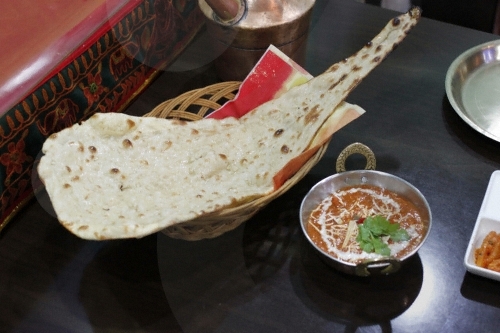
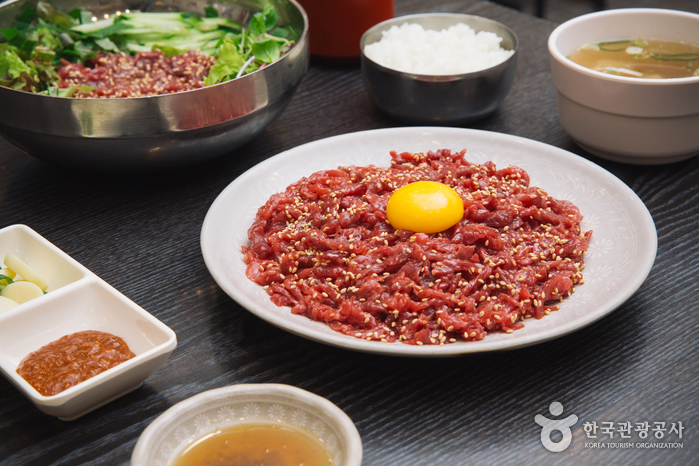
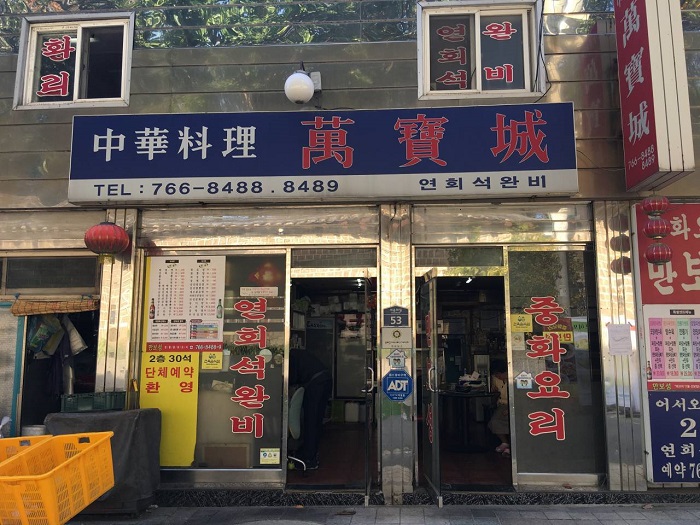

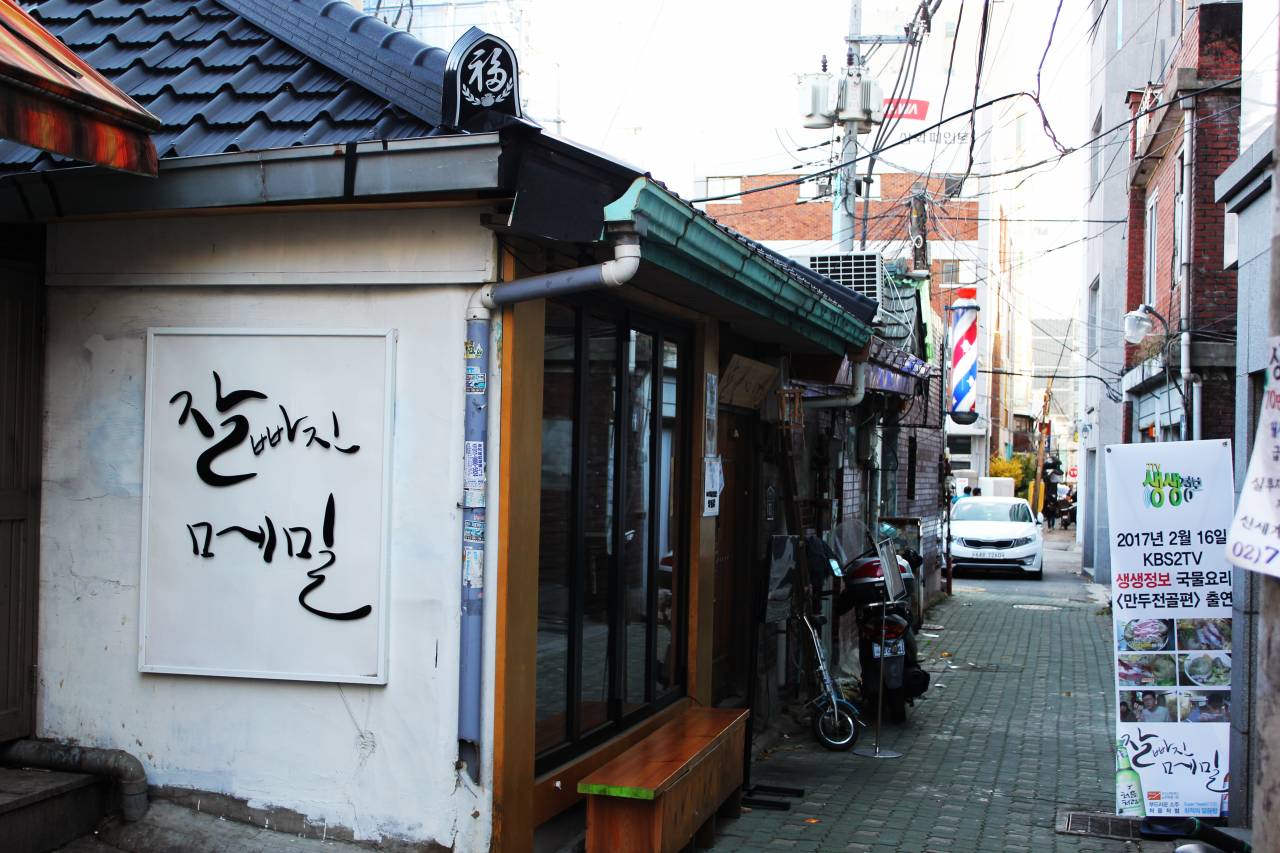
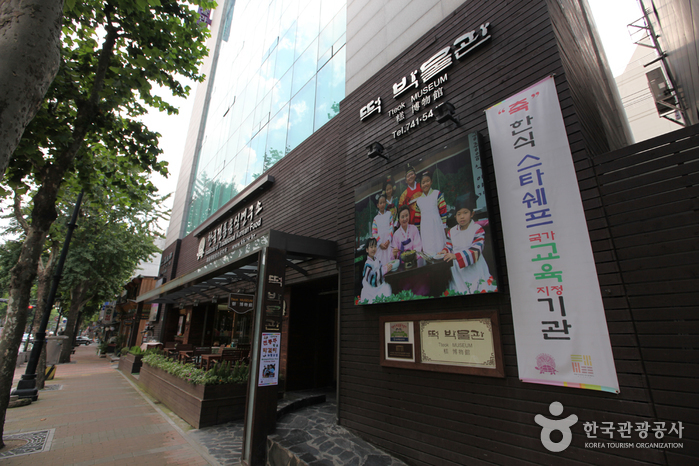
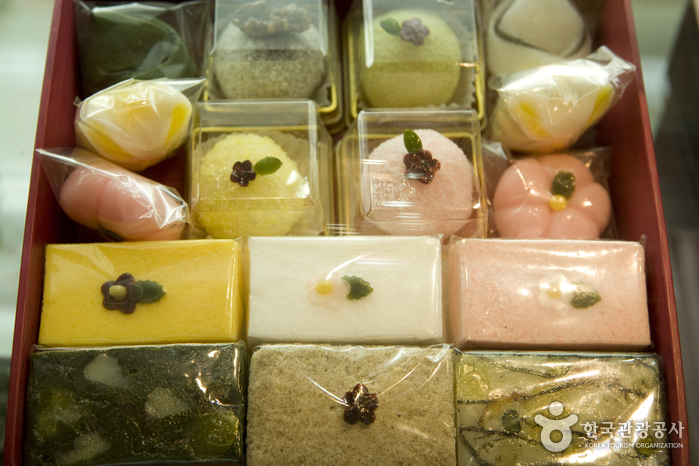
![Inwoohouse [Korea Quality] / 인우하우스 [한국관광 품질인증]](http://tong.visitkorea.or.kr/cms/resource/64/2633664_image2_1.jpg)
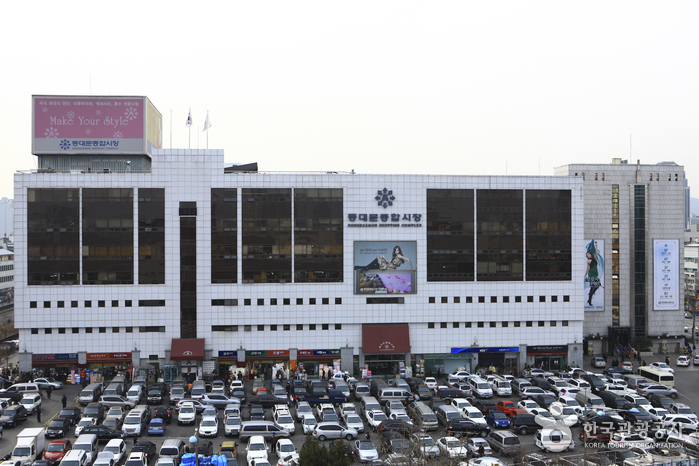
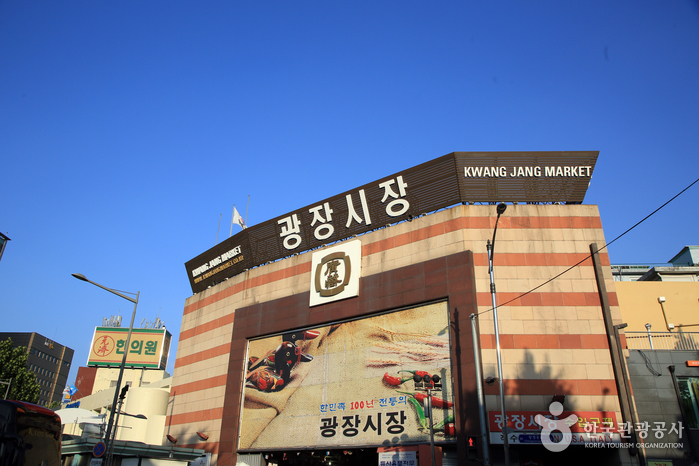
 Français
Français
 한국어
한국어 English
English 日本語
日本語 中文(简体)
中文(简体) Deutsch
Deutsch Español
Español Русский
Русский